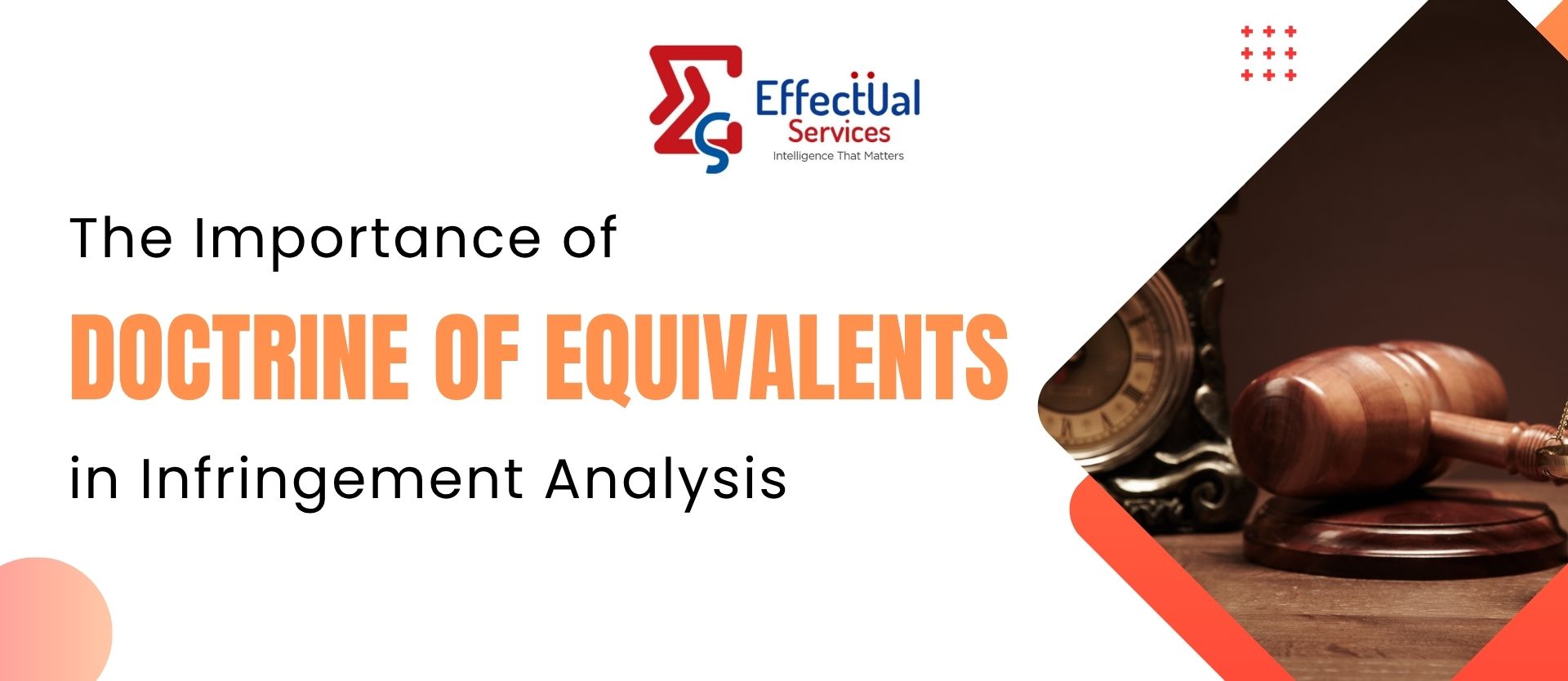The Importance of Doctrine of Equivalents in Infringement Analysis

The Doctrine of Equivalents (DoE) ensures that patent protection is not easily bypassed by competitors. This doctrine allows patent holders to assert infringement even when an accused product or process does not literally fall within the scope of the patent’s claims, offering additional protection against minor changes that would otherwise avoid infringement.
For example, consider a patent for a car engine that specifies a piston made from a particular material, such as aluminum. If a competitor produces a similar engine but uses a different material, like titanium, the product may not literally infringe the patent. However, if the titanium piston performs the same function in the same way to achieve the same result as the aluminum piston, the Doctrine of Equivalents could still be applied to find infringement, as the change is not substantial enough to avoid the patented invention’s core purpose.
The doctrine's significance is particularly evident in patent infringement analysis. It extends the reach of patent claims to cover insubstantial alterations, ensuring patent holders aren’t deprived of their rights due to trivial modifications. Here's why the Doctrine of Equivalents is so important in infringement analysis.
Broadens Patent Protection
A patent’s claims define its protection, but the Doctrine of Equivalents ensures that these boundaries aren’t easily circumvented. Without this doctrine, an infringer could make small, inconsequential changes to a patented invention and avoid liability. By extending protection to equivalent elements that perform substantially the same function in substantially the same way to achieve substantially the same result, the doctrine ensures that the invention is protected against such modifications.
Prevents "Design Around" Tactics
The Doctrine of Equivalents prevents competitors from "designing around" patents. Even if a product does not literally infringe a patent’s claims, the court can still find infringement if the changes are equivalent to the claimed invention. This discourages companies from making slight, insignificant modifications just to avoid patent infringement, preserving the patent holder’s exclusivity and incentives to innovate.
Balances Patent Rights with Public Interest
While the Doctrine of Equivalents protects patent holders, it also ensures patents aren’t overly broad or restrictive. Through defenses like prosecution history estoppel, the doctrine strikes a balance between protecting patentees and preventing abuse of patent claims. Prosecution history estoppel prevents patentees from claiming equivalence for elements that were narrowed during the patent application process, ensuring the scope aligns with what was granted by the patent office.
Guides Patent Infringement Litigation
In patent infringement cases, the Doctrine of Equivalents helps determine if an accused product infringes a patent. Courts evaluate whether the accused product performs the same function in the same way to achieve the same result as the patented invention. This analysis provides a framework for courts to assess infringement beyond literal claim interpretation, ensuring a fair and comprehensive enforcement of patent rights.
5. Key Considerations in Applying the Doctrine
The Doctrine of Equivalents has important limitations:
- All Elements Rule: Infringement under the doctrine requires the accused product to contain equivalent elements for each and every claim element, preserving the overall functionality of the invention.
- Prosecution History Estoppel: This limits the doctrine by preventing a patentee from asserting equivalence for an element surrendered during patent prosecution.
- Ensnarement Defense: This defense prevents the application of the doctrine if it would render the patent invalid by conflicting with prior art.
Conclusion
The Doctrine of Equivalents is essential for protecting patent rights, ensuring that minor design changes don’t evade patent claims. By broadening the scope of patent claims, it strengthens the patent system, fostering innovation while preventing unfair exploitation of patents. Understanding this doctrine is crucial for patent holders and those involved in patent litigation.
Related Resources:
Attorney Client Privilege & Work Product Doctrine An Analysis From Outsourcing Perspective
Solutions Driving Innovation & Intelligence
Enabling Fortune 500's, R&D Giants, Law firms, Universities, Research institutes & SME's Around The Globe Gather Intelligence That
Protects and Nurtures Innovation Through a Team of 250+ Techno Legal Professionals.

